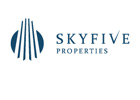Categories
Choose Language





Popular Posts
Fix and Flip Financing: All about Fix and Flip Loan Rates
Spend some time looking at lists of real estate side hustles and you’ll see flipping houses turn up on a lot of them. If the term isn’t familiar, the idea is pretty straightforward.
You look for properties that are basically sound but need some renovations. You buy the property, fix it up, and sell as fast as possible or flip it. If all goes well, your fix and flip lets you pocket some profit.
Of course, those lists often gloss over the very important element of fix and flip financing. They almost never get into the kinds of rates you can expect.
If you’re considering fix and flip as your side hustle, keep reading and learn more about loan financing for those projects.
What Are Fix and Flip Loans?
The exact description that lenders apply to these types of loans varies, but they are typically hard money mortgages. Hang in there for a little bit because there is a lot to unpack around the term “hard money mortgage.”
These loans rarely come from a traditional bank or credit union. Those lenders see fix-and-flip as too high-risk to make for good investments. Instead, the money comes from private lenders.
The loans are always short-term. They range from as little as three months up to around 36 months. For comparison, your standard mortgage ranges from 15 years to 30 years.
The property itself serves as collateral, so failure to pay means you lose the property.
Benefits
Fix and flip loans may not sound great, but they do offer some important benefits. For buying fixer-uppers, these are often both the only and best loans you can get.
Regular banks generally won’t or can’t finance them. They must meet certain requirements in terms of the properties they let you buy with the money they lend you. Fixer-uppers often can’t meet those requirements because only the renovations you’ll do will get them up to the appropriate standard.
Securing a loan typically depends less on your credit score than a traditional loan.
Rates and Requirements
Traditional mortgages often call for a down payment. The average is around 7 percent, give or take. With fix and flip loans, the average down payment is usually around 20 percent.
You also see much higher interests rates. For standard mortgages, rates have ranged between approximately 3 percent to around 5 percent in recent years. Fix and flip interest rates typically start around 6 percent and can go over 15 percent.
The exact rate will depend on the lender and the specifics of the loan.
Fix and Flip Financing and You
If you’re looking at flipping as a side hustle or even a full-time job, you’ll likely need fix and flip financing at some point. It’s a different animal than traditional mortgages.
The length is shorter, the interest is higher, and you usually need a much bigger down payment. On the upside, the project typically matters more than your credit score in getting approval. It’s also a way to finance a purchase regular lenders won’t usually touch.
Looking for more real estate insights? Check out some of the other posts in our Blog section.
Popular Posts:

Kaya Wittenburg
Kaya Wittenburg is the Founder and CEO of Sky Five Properties. Since the age of 10, real estate has been deeply ingrained into his thoughts. With world-class negotiation and deal-making skills, he brings a highly impactful presence into every transaction that he touches.
He is here to help you use real estate as a vehicle to develop your own personal empire and feel deeply satisfied along the way. If you have an interest in buying, selling or renting property in South Florida, contact Kaya today.











